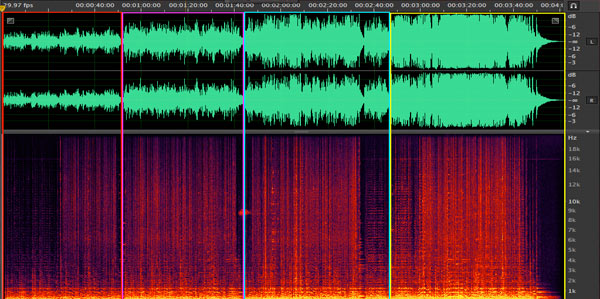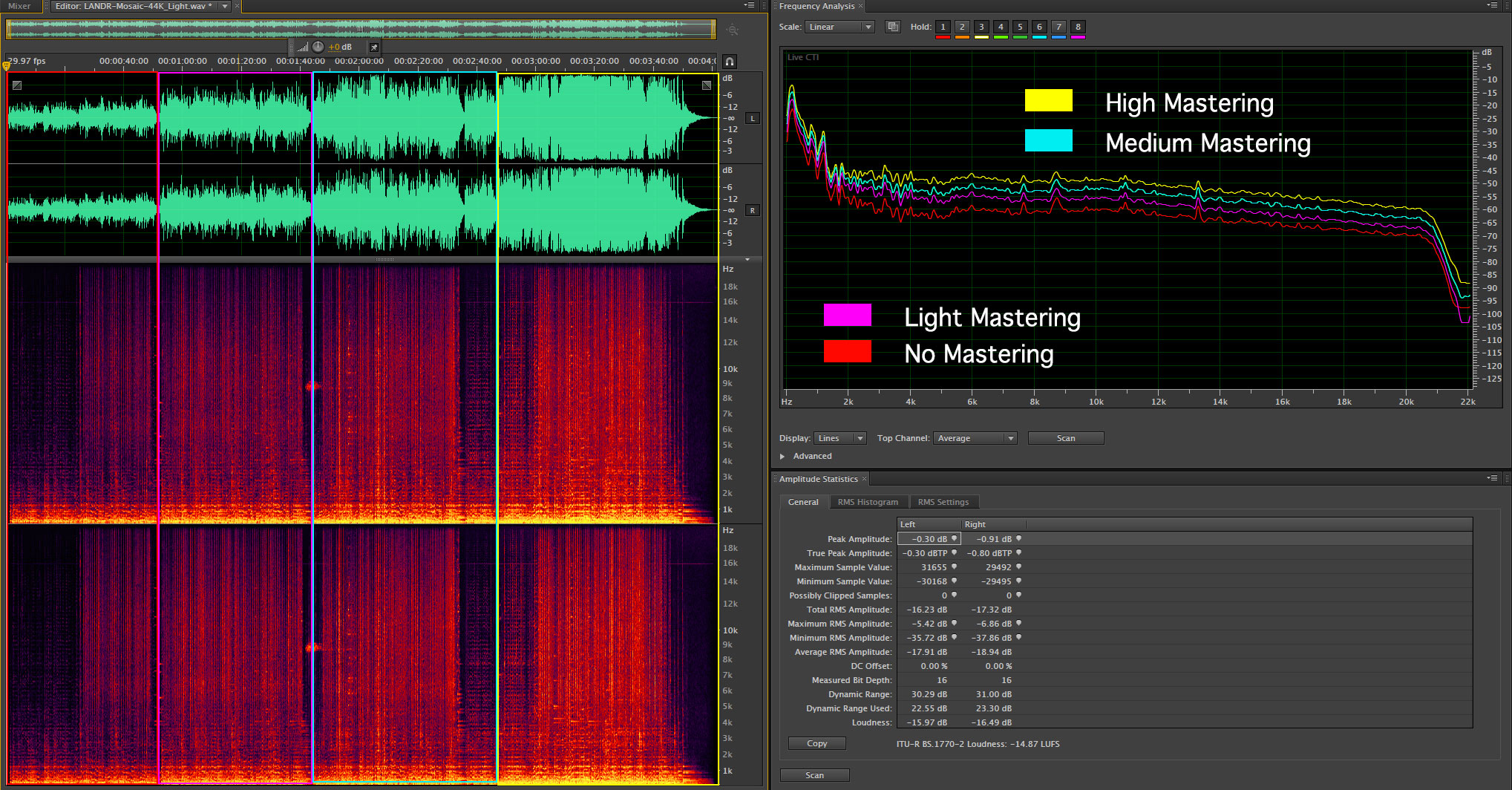Mastering and Loudness
I didn’t get the chance to pick Bob Ludwig’s brain about what he thought of the files that I used during my demonstration at the DEG, CEA, NARAS and label event at Jungle City Studios last week. I was very pleased that he stuck around until my presentation and heard my presentation and demo tracks. As a former mastering engineer, I know the type of work that he’s been doing for many years AND I know how the tools and techniques has evolved over that period. Mastering engineers are the final arbiters of fidelity in the music production process and use both analog and digital (PCM only as DSD doesn’t allow any processing) to alter final mixes to meet their clients’ needs.
But the tracks that I played during my presentation didn’t undergo any “mastering” other than to be sequenced and adjusted for relative amplitude. I had a number of people come up to me following the presentation and tell me that they thought my tracks “sounded the best” and that they enjoyed my presentation. I know David Chesky and I agree in trying to avoid any manipulation of the real world musical dynamics associated with a music selection. That’s the difference between the commercial pop/rock/jazz records that you’re used to and the unprocessed tracks that AIX, and a few others, release. It makes a difference but it’s a very tough sell…louder is always perceived as better.
I spent hundreds of hours mastering the mixes of other artists. From crooners to classical guitar to Bad Company and The Allman Brothers, I tweaked EQ and dynamics processors…stripped out hiss and distortion with NoNoise from Sonic Solutions and made loud CDs. When the artists/clients were in the room, I would play the mastered version vs. the unmastered versions back to back and ask for feedback. In virtually every case, the louder version was preferred. The level change may have been subtle or large…but it seems everyone likes his or her music loud.
So I’ve spent some time mastering “Mosaic” three different times. The files are up on the FTP site in a folder called Mosaic Mastering Comparison. I’ve also included the original unmastered file AND a version that contains short segments of all of the files edited together so that you can have an active switched version.
Take a look at the spectrograph below. This illustration shows the differences between the four versions of the same track. The mastering involves dynamics processing and identical EQ treatments.
Figure 1 – The spectra of 4 versions of “Mosaic” from unmastered to heavily mastered. [Click to enlarge]
You’ll notice that the rightmost plot is almost devoid of dynamics…but I’ll bet that many people will like it better than the others because it “kicks” harder. We respond to loudness more than dynamic range…so go figure, where do you think mastering has taken us over the past decade or so.
I did speak with a number of mastering engineers in NYC and there is a distinct trend towards less dynamic squashing…let hope. Take a listen to these files and let me know what you think. The amplitude difference is over 10 dB!



Hi Mark,
If I had just heard the track with the most juiced up sound, I probably would say it sounded amazing. But finally a comparison where the difference is totally clear! And especially when I compensated by equalizing loudness (increase volume of the original track by +10dB), then the superiority of the original track was crystal clear, even when listening on my Sennheiser HD558 headphones. In the parts with fast transitions between quiet and loud (e.g. ~3 mins), the smoothness of the original really shines. The mastered track transitions seems more abrupt and sharp. And the constant in your face of all the instrumentation, I can imagine would be more painful during extended listening sessions.
Todd, you’ve inspired me to prepare the most dramatic part of the Mosaic track in 5 different masterings AND I’ve level matched them to demonstrate the inner details of the dynamic range. If people don’t ever hear the unmastered stuff how are they supposed to know.
Hi Mark, i receive your email posts and they are part of my day now. You make references to a FTP site but i am really struggling to find that site. I have reread the pas two posts and cant see it…
Thanks
I will send the credentials to you…or you can click on the free HD-Audio samples link on the main page. That triggers a send as well.